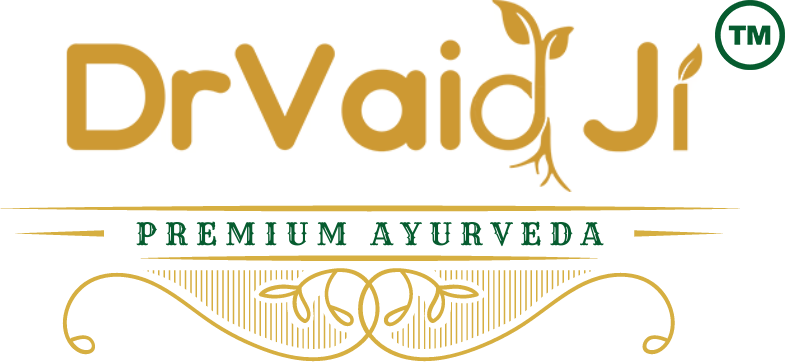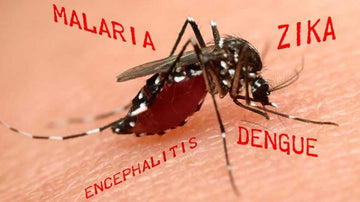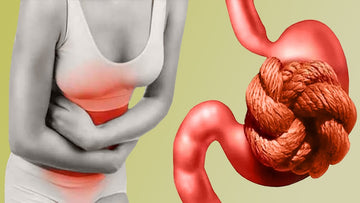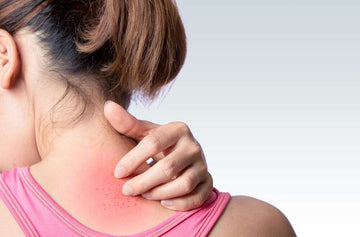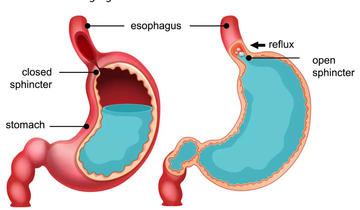
WHAT IS CEREBRAL PALSY ?
Cerebral palsy is a group of neurological disorders that affect a person's ability to control their muscles and movement. It typically appears in early childhood and is caused by damage or abnormalities in the developing brain. Symptoms can range from mild to severe and may include muscle stiffness, weakness and coordination problems.
CAUSES OF CEREBRAL PALSY :
Cerebral palsy can be caused by various factors, including:- Prenatal factors: Problems during pregnancy, such as infections, maternal illness, exposure to toxins, or insufficient oxygen to the developing fetus, can contribute to cerebral palsy.
- Perinatal factors: Complications during childbirth, such as a lack of oxygen (asphyxia) or premature birth, can increase the risk.
- Postnatal factors: Brain injuries or infections in the first few years of life can also lead to cerebral palsy.
TYPES OF CEREBRAL PALSY :
- Spastic Cerebral Palsy: This is the most common type, characterized by muscle stiffness and difficulty with fine motor control.
- Athetoid or Dyskinetic Cerebral Palsy: It involves involuntary and uncontrolled movements, making it challenging to maintain posture and control movements.
- Ataxic Cerebral Palsy: This type results in problems with balance and coordination, often leading to shaky movements and difficulties with fine motor skills.
- Mixed Cerebral Palsy: Some individuals may exhibit symptoms of more than one type of cerebral palsy.
SYMPTOMS OF CEREBRAL PALSY :
The symptoms of cerebral palsy can vary in type and severity from one person to another, but common signs and symptoms include:- Motor problems: Cerebral palsy primarily affects a person's motor function, leading to issues with muscle control and movement. This can manifest as muscle stiffness, weakness, or spasticity (involuntary muscle contractions).
- Coordination difficulties: Individuals with cerebral palsy may have trouble with balance, coordination, and fine motor skills.
- Speech and communication issues: Some people with cerebral palsy may have difficulty speaking or using their hands for communication.
- Developmental delays: Children with cerebral palsy may achieve developmental milestones, such as walking or talking, at a later age than their peers.
- Abnormal reflexes: Unusual reflexes, such as the persistence of primitive reflexes beyond infancy, can be a sign of cerebral palsy.
- Joint and bone problems: Over time, cerebral palsy can lead to joint contractures or deformities due to muscle imbalances.
- Intellectual and sensory impairments: Some individuals with cerebral palsy may also have cognitive or sensory impairments, although many have normal intelligence.
DIAGNOSIS OF CEREBRAL PALSY:
- Medical history and physical examination: A healthcare provider will gather information about the child's or individual's medical history, including prenatal, peri-natal, and postnatal factors that might have contributed to cerebral palsy. They will also conduct a physical examination to assess motor skills, reflexes, muscle tone, and other relevant factors.
- Developmental assessments: Developmental milestones and delays are assessed to determine if the individual is achieving age-appropriate milestones for motor and cognitive skills.
- Imaging studies: Brain imaging techniques, such as MRI (Magnetic Resonance Imaging) or CT (Computed Tomography) scans, may be used to visualize the brain and identify any abnormalities or damage.
- Additional tests: In some cases, other tests, such as blood tests, genetic testing, or electroencephalograms (EEG), may be performed to rule out other conditions or factors that could mimic cerebral palsy.
AYURVEDIC TREATMENT OF CEREBRAL PALSY
- Ayurvedic treatment for cerebral palsy aims to improve the quality of life for individuals with this condition through a holistic approach. It typically includes a combination of therapies, dietary recommendations and herbal remedies.
Common Ayurvedic approaches to manage cerebral palsy include:
- Panchakarma therapy: This is a detoxification and rejuvenation therapy that aims to remove toxins from the body and balance the doshas (Vata, Pitta, and Kapha) to improve overall health. It includes :
- Udvartana
- Abhyanga
- Sarvanga swedan
- Yoga basti
- Ayurvedic herbs : Medhya drugs are used in refining the brain functional capacity and also helps in regeneration of damaged brain cells.
- Brahmi
- Mandukaparni
- Shankhpushpi
- Jyotishmati
- Kushmand
- Yashtimadhu
- Ashwagandha
- Shatavari
- Guduchi
- Vacha
- Haritaki
- Abhrak bhasma
- Suvarna bhasma
- Amalaki
- Ayurvedic Formulations :
- Panch-tikta-ghrita guggul
- Panchgavya ghrita
- Brahmi ghrita
- Yograj guggul
- Kaishor guggul
- Vatagajankush rasa
- Tapyadi loha rasa
- Maha-vidhwansa rasa
- Vish-tinduk vati
- Dietary recommendations: Ayurvedic dietary guidelines are provided to support the person's constitution and improve digestion, which is considered essential for health. Food items like eggs, avocados, nut butters, olive oil, dark & leafy green vegetables, whole grains, greek yoghurt, ginger, salmon, turmeric should be consumed.
- Yoga and meditation: These practices help with relaxation, stress management and improved flexibility and mobility.
CAC TREATMENT FOR CEREBRAL PALSY
CEREBRAL PALSY CARE KIT
1. Detox Premium Powder:
These herbal sachets are prepared from ingredients such as Shankh bhasma, Sutshekhar ras, Parvalpishti, Shukta, Giloy, Kamdudha ras, Shvetparpati that gives calming effect on the stomach.
- Shankh bhasma: This ayurvedic bhasma is prepared from conch shell. The bhasma shows antispasmodic, anti-inflammatory, antioxidant, antacid, digestive stimulant properties. The problems like indigestion, heartburn, acid reflux, abdominal pain, loss of appetite, etc are easily treated with it.
- Sutshekhar ras: It is an ayurvedic preparation that maintains pitta dosha in the body. This ras provides effective results in abdominal pain, heartburn, nausea, fever, headache, epigastric tenderness, etc.
- Parval pishti: This pishti is prepared from coral calcium processed in rose water. It provides effective results in acidity, burning sensation, headache, etc.
- Shukta pishti: This pishti balances the pitta dosha in the body and removes all toxins from the body.
- Giloy satv: Giloy satv possesses antioxidant, anti-inflammatory, carminative, immunomodulator, etc properties. It eliminates the ama from body hence provide good results in acidity problem.
- Kamdudha ras: This ras reduces heat, burning sensation, epigastrium tenderness, irritability, heartburn, and acidity.
- Shwet parpati: It is also effective in acidity.
Recommended Dosage: Take one sachet twice daily.
- Panchasakar churna:
Panchasakar churna is an Ayurvedic formulation that consists of mainly five ingredients as its name describes. This medicine is known to have properties like laxatives and purgatives etc. The Churna contains ingredients such as Shunthi (Zingiber officinale), Haritaki (Terminalia chebula), Trivrith (Operculina turpethum), Pippali (Piper longum), and Sauvarchala lavana. It decreases the abdominal pain, bloating, constipation that maintains a healthy colon and supports the overall health of the body.
Recommended Dosage: Take 1 teaspoonful with Lukewarm water at bedtime.
- Anu Tailam:
Anu tailam is herbal and ayurvedic oil used for the nasal instillation for curing the various diseases. It is administrated through the nasal passage to lubricate, protect and calm the mind. It includes – Sesame oil, Bael tree root, Solanum root, Cinnamon stem bark, Holostemma tuber, cardamom fruit, etc. It mainly balances the Kapha dosha and is beneficial in diseases of head, brain, face, nose, and eyes. Its use is generally recommended in chronic headache, problem of migraine, sinusitis, improves the voice, and vocal cords. Anu tailam gives effective results to asthma patients.
Recommended Dosage – Put 2-3 drops of Anu tailam in each nostril.
- Nerve up tablet:
These tablets are pure ayurvedic formulation. Nerve up tablets help in balancing the vata doshas and kapha dosha. It acts as nervine stimulant. It shows effective results in improving the central nervous system. It contains natural ingredients like shudha kuchala, shudha shilajeet, praval pishti, shankh bhasma etc. This tablet helps in Backache, knee pain, headache, bronchitis, depression.
Recommended Dosage– Take 1 tablet twice daily.
- Makar Rasayan:
Makar Rasayan tablet is a herbo-mineral tablet and is purely Ayurvedic formulation. CAC MAKAR RASAYAN tablet help in balancing all the three doshas. It helps to rejuvenate body tissues and act as an immuno modulator. It helps in proper blood circulation. It prevents the skin from dryness. It contains natural ingredients like shudha kuchla, guduchi satva, shudha shilajeet, ras sindoor, moonga bhasma, shankh bhasma, praval pishti etc. Herbs and minerals used for the formulation of these tablets show antioxidant, aphrodiasic, analgesic and immuno modulator properties.
Recommended Dosage: Take 1 tablet twice daily with normal water.
- Ashwagandha Tablet:
Ashwagandha is an ancient medicinal herb that have multiple benefits. It shows effect deeply and provide nourishment to deep situated dhatus (muscles). The tablet increases muscle mass and provide strength to the whole body. Further, it shows anti-cancerous properties that prevent further spreading of infections.
Recommended Dosage – Take 1 tablet twice daily with normal water.
- Trikatu Syrup:
Trikatu syrup is considered as the best Ayurvedic remedy in pacifying the Vata Doshas and has amazing results in curing this condition. TRIKATU SYRUP is purely Ayurvedic formulation made up of three herbs. CAC Trikatu Syrup helps to eliminate excess Kapha or mucous from the body, supports respiratory system, manages weight, helps to take out impurities or ama from the body, supports healthy detoxification, reduces swelling. It shows anti-inflammatory, analgesic, expectorant, antioxidant properties. This syrup is made up of equal parts of three herbs such as Pippali (Piper longum), Shunthi (Zingiber officinale), & Marich (Piper nigrum) that maintains the metabolism in the body. It is an Appetizer and it improves digestion, supports normal gastric function, and normal circulation.
Recommended Dosage – Take 2 teaspoonful twice daily.
